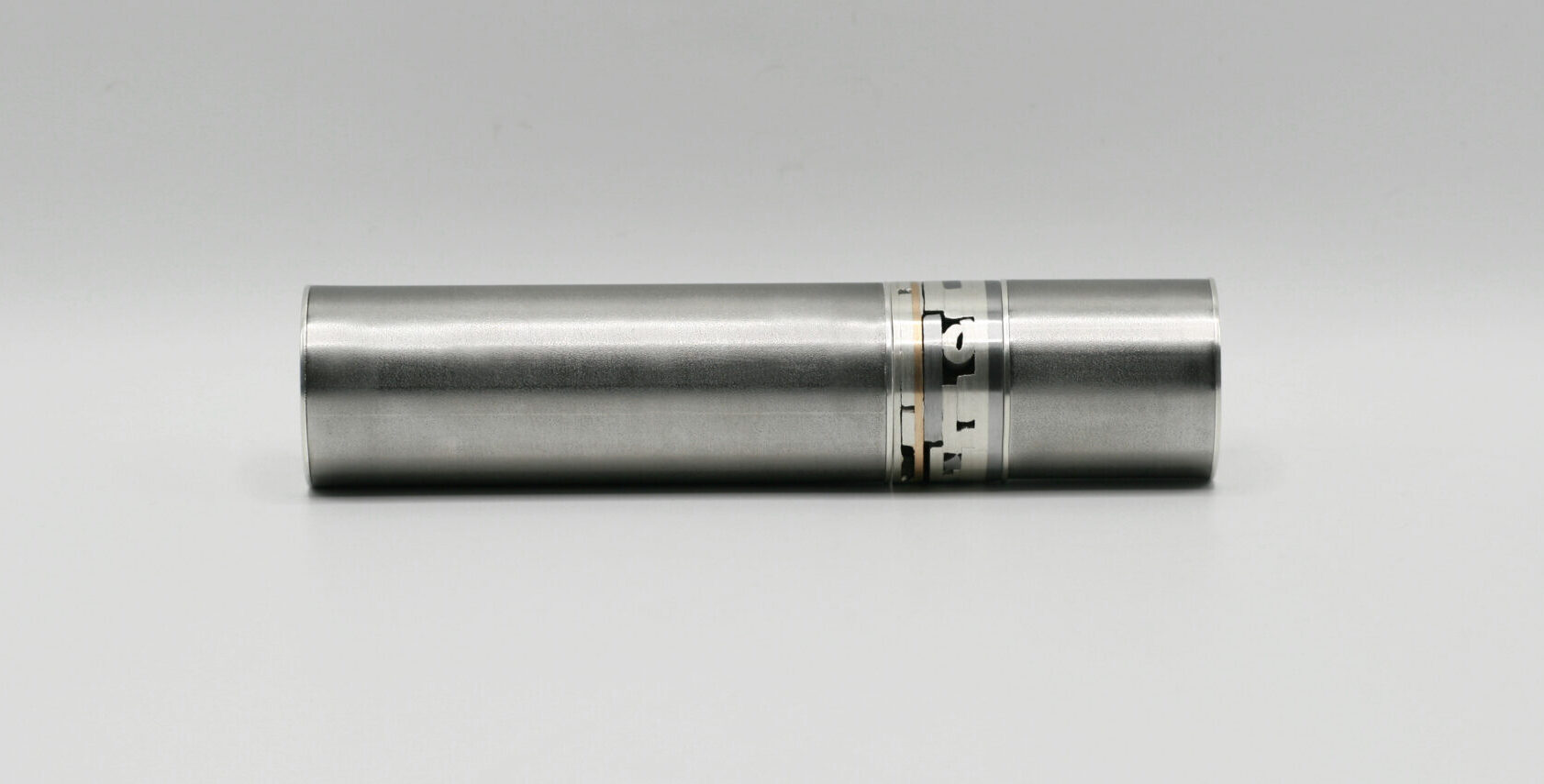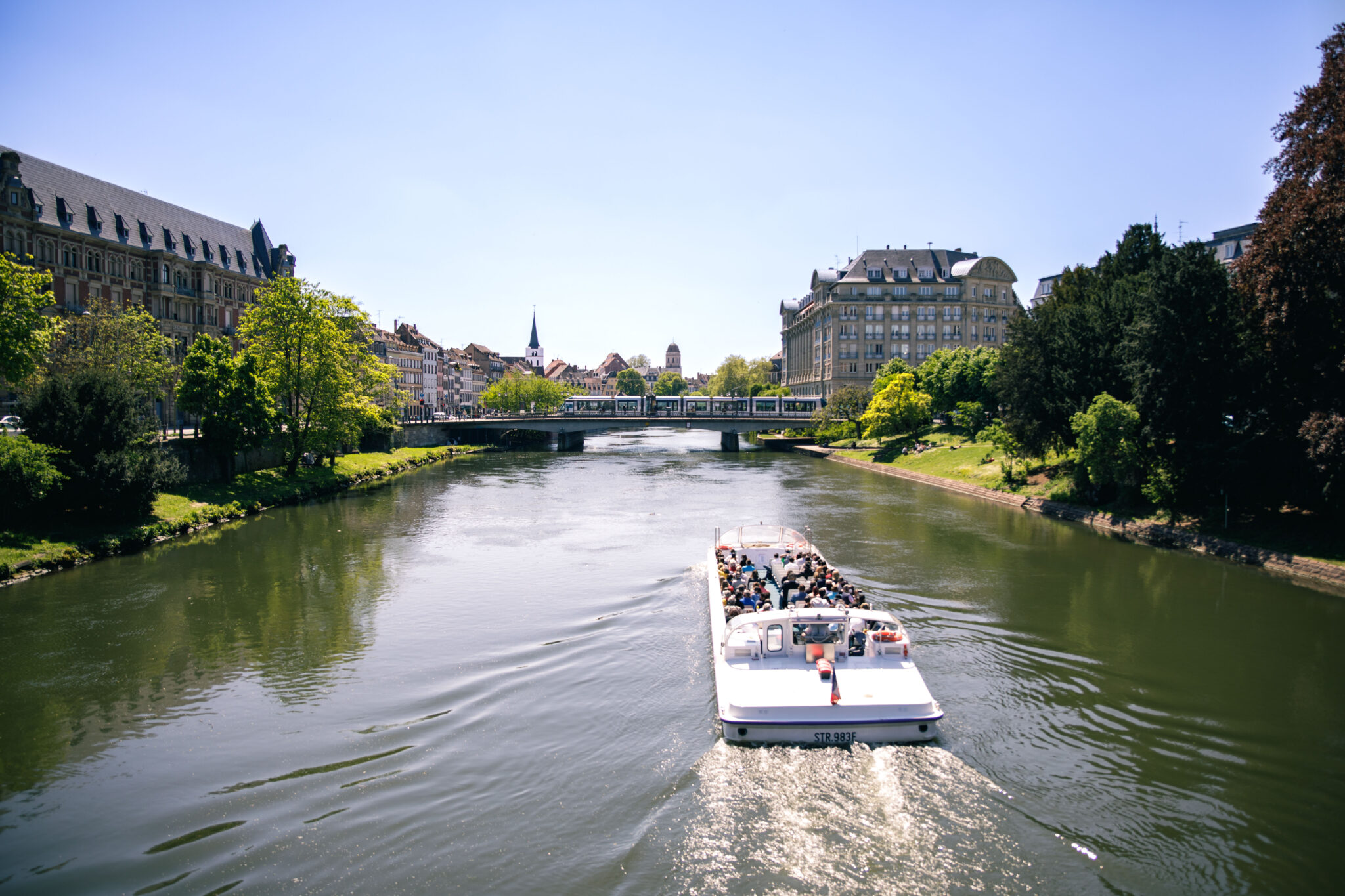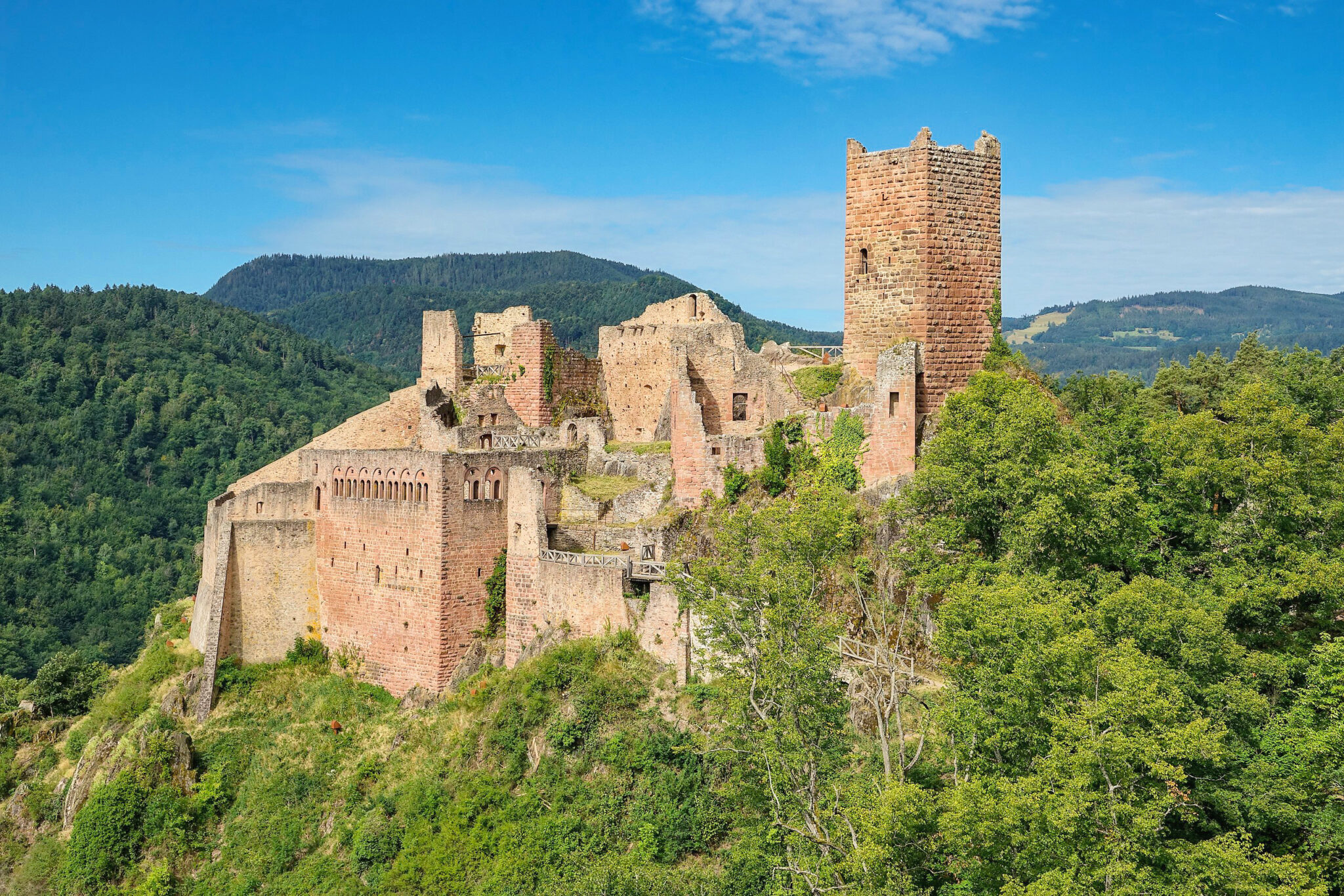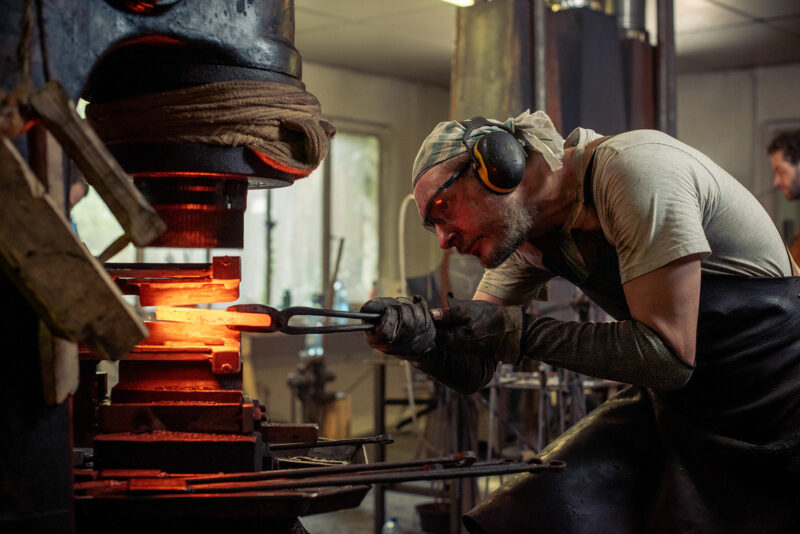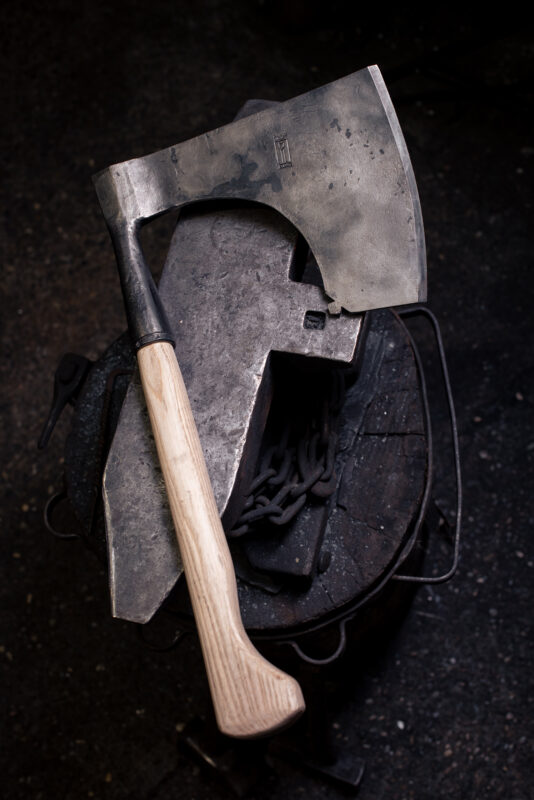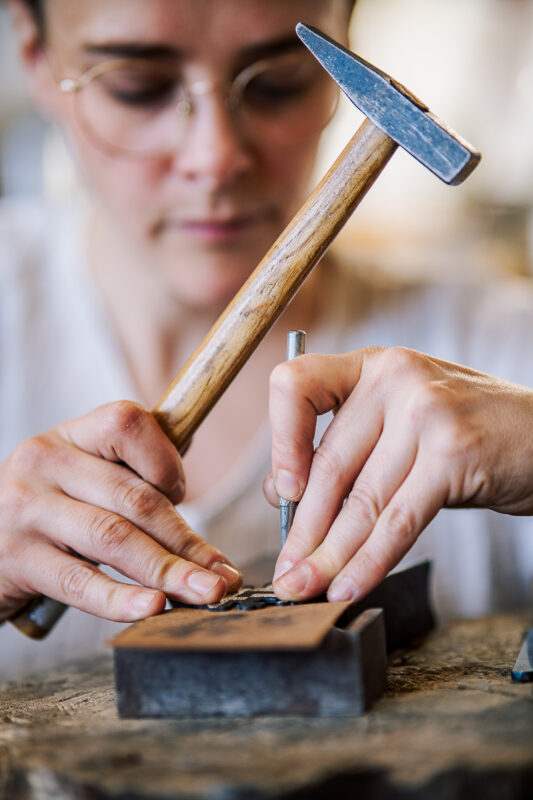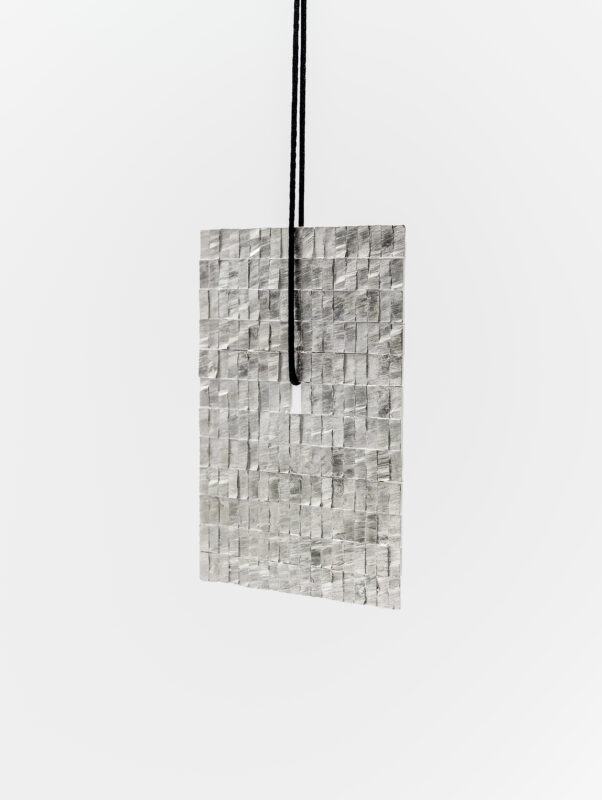For Annie Sibert, every scratch, every curve and every texture tells a story. At the heart of her work lies the reimagining of our understanding of form and function. Her creative process resembles a delicate dialogue between her hands as she discovers the subtle play of light on different surfaces and observes how materials yield under pressure. After spending time in Asia, patterns have become even more of a focus. In her eyes, they are living symbols, echoes of stories and thoughts that she conveys.
© Courtesy of the artist
Which place do you currently call home and where do you work on your projects?
I live and work in Strasbourg, France located near the German border. The city boasts both German and French influences in its culture and architecture.
Do you have a favourite place in your area where you like to relax and linger?
To relax, I regularly go to the Donon which is the southernmost mountain in the sandstone Vosges. It is located an hour’s drive west of the city. After an hour’s hike through the forest, you reach the summit, from where you can discover the stunning view on the valley below, and a greek temple from which you can appreciate this landscape. Every time I get on that « stage », I feel like I am on top of the world. This area is well known for its telluric energy, it gives the place a very special atmosphere.
© Philemon Henry
Are there any urgent political issues or problems in your region?
In Alsace, the region where I live Cultural identity and heritage are important topics for many residents. Alsace is known for its rich history, distinctive culture and unique heritage. There are numerous initiatives aimed at protecting and promoting Alsatian cultural identity, including local language and traditions. I find that it is vital to remember the language and traditions of the regions. These memories make the links between generations fairer. There are so many political issues nowadays. What strikes me most in Strasbourg is the poverty and homelessness. I find it revolting to know that many families sleep on the streets in such a rich city.
In your opinion, what has developed well in the last 5 years—and what has not?
Over the past five years in Alsace, innovation and entrepreneurship have developed very well: There has been a growing focus on it in Alsace, with initiatives to support startups, small businesses, and research institutions. Collaborations between universities, businesses, and government agencies have fostered an environment conducive to innovation and economic growth. On the contrary, local art schools are currently in danger of closing in France. Despite the fact that these establishments (43 in total) are a fertile breeding ground for creation and innovation, as well as the guarantee of quality public artistic education, they are mistreated and placed under the supervision of the regions which does not give them the protection that national schools enjoy today. Actions and strikes are organized by teaching staff and students who hope to be heard by the government. Solutions must be found so that these places of creation remain reservoirs of research, accessible to all. The art school of Strasbourg, la Haute Ecole des Arts du Rhin (HEAR) is also concerned by this issue.
© Original: Gzen92 Derivative work: Aristeas, Château du Saint-Ulrich (Ribeauvillé) (2) edited (1), adjusted colours, CC BY-SA 4.0
©Cayambe, Strasbourg Lycée int pontonniers 01, CC BY-SA 3.0
Do you know a hidden gem when it comes to local manufacturers—whether it’s arts and crafts, sustainable products or food?
Maison Luquet, a blacksmith’s workshop, dedicated particularly to cutting, is nestled at the foot of the Vosges, in the historic center of Munster. One floor of their workshop is reserved for craftspeople and trainees, and every effort is made to encourage interaction and exchange. Maison Luquet aims to revive the excellence of handmade and tailor-made products. They specialise in the manufacture of iron tools.
© Maison Luquet
© Maison Luquet
Is there anything particularly innovative in your region? Also in comparison to other places you have already visited?
The heliodome, seen by many as the home of the future, was created in 2011 near Cosswiller (west of Strasbourg) by Eric Wasser. Initially a
cabinetmaker, best worker in France at the age of twenty-five, Eric Wasser then specialized in design. His solar house is a little gem of intelligence and technology intimately linked to nature. It looks like a precious stone with its diamond-shaped canopy. This home is designed according to the rhythm of the sun. The principle of combining architecture and the course of the sun is as old as time itself. In 2003, he won a first prize in the Lépine price with his project. There is only one similar solar house in France. It is situated in Saint Saturnin in the Angers region, created by Geneviève and Mickael Bernard.
Do you have a secret restaurant tip that you would like to share with us?
Madeleine, is a restaurant-brasserie which opened at the beginning of 2024. Inside, a large emerald green stoneware bar reflects the green glasses made from recycled wine bottles that stand on the tables. Madeleine serves seasonal cuisine made with products from local producers to offer you the best of the Alsace region. There is also a wine list that has been selected to complement the cuisine.
Is there a local shop whose products are only available in your region?
Le Générateur and L’Écrin are two community shops that highlight the art and crafts of the Grand-Est region. They are located in the heart of Strasbourg in the pedestrian street, Sainte Madeleine. It is a collaborative and participatory project led by the exhibiting creators who welcome you to the store. You can regularly discover new products from our local artists and craftspeople. I have been selling jewels and objects there for five years.
What are your 3 favorite apps that you use every day and couldn’t live without?
I use Instagram every day for my professional activity. Raintoday for my bike trips in the city and Discord to chat with different groups I’m part of.
Do you have any favourite newspapers or online magazines? And how do you keep up to date with politics or social and cultural issues?
I regularly read two newsletters on the net to which I subscribed, including one from the web magazine Pen. Founded 1997 in Tokyo, Pen is a culture and lifestyle magazine specializing in Japan that I really like. I like to discover new interesting topics every month to get inspired. The second one is called The French Jewelry Post. It is written by Sandrine Merle. This newsletter and blog deals with stories around luxury jewelry in France. From the famous place Vendôme to her trips, she always publishes interesting tips and adresses. This media is always talking about fresh news that I like to know. I get information through the radio that I listen to every day at home and at work, for example France Culture.
© Ji-Elle, Strasbourg-Quai Turckheim, adjusted colours and perspectiveCC BY-SA 4.0
Imagine you could be mayor for a year—what would you change?
If I were mayor of Strasbourg for a year, I would make transport free for everyone. For me, the movement of men and women in the city promotes connections between them, it is the most important thing in a community: communication, it provokes knowledge and understanding. Transport would also be free for non-residents (of the city), I find that this would establish a feeling of freedom for users and make the places symbolically and physically more accessible.
One last question: If you could choose another place to live—regardless of financial or time constraints—which one would you choose?
I would choose Venice, it is an incredible city, first of all because it is historic but also because it is magnificent! I love wandering in its streets and walking randomly to discover new ones each time. The omnipresence of water is what makes this city so special. Only motorboats break this silence of waves and footsteps, the fact that there are no cars makes the place very pleasant and very relaxing. It’s not necessarily the architecture that I like the most but rather the textures and the light that falls on the walls and paving stones of the city. Walking the streets of Venice is punctuated by crossing bridges, which always creates new perspectives on the city. I’ve been there three times in the last two years, by train each time, and I started collaborating with a jewelry gallery in the city, Ohmyblue. Next time I want to go there during the winter, to discover the city in a different atmosphere and new lights.
© Xing Wei
© Pierre Frigeni

